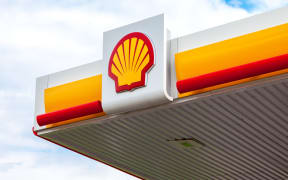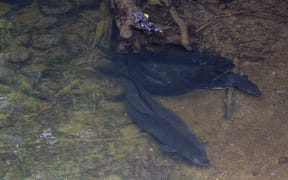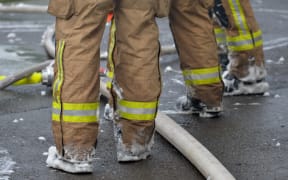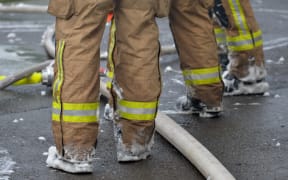Multinational methanol producer Methanex has admitted using firefighting foam in Taranaki for a decade after it was banned.

Methanol producer Methanex has admitted using firefighting foam in Taranaki for a decade after it was banned. Photo: 123RF
Tests show a chemical in the foam, PFOA, has contaminated groundwater at Motunui at levels just above drinking water guidelines.
This and two other sites - Methanex's tank farm in New Plymouth and a council landfill - have contamination that also exceeds these guidelines.
Foam with perfluorooctanoic acid in it was banned in New Zealand in 2006.
"Methanex stopped using foam in fire training situations in 2016 when evidence came to light about environmental impacts," the Canadian corporation told RNZ in a statement. "Methanex was acting within requirements and proactively stopped use when information came through from suppliers."
The company, a large employer in Taranaki, said in a statement people were not at risk. "The levels are so low and of such a composition, that they are not considered to be of any health concern," it said.
The test report said Motunui people got their drinking water from the town supply sourced from Lake Mangamahoe, 20km upstream.
At Methanex's Omata tank farm in New Plymouth, high levels of a second banned foam chemical, PFOS, were detected. It was at six times above drinking water guidelines and above the protection levels for freshwater and marine species.
"Potential risk to recreational users of and ecological receptors in the Tasman Sea is considered minor or insignificant owing to the dilution factor of the Tasman Sea," the test report said.
Methanex said it had never used PFOS foam so this contamination must have come from historical use on adjacent sites.
Shell also a user of PFOS foam years after ban
Oil company Shell last year admitted having PFOS foam at its Paritūtū and Omata tank farms until August 2018, 12 years after the ban.
The latest testing - commissioned by the regional council - also picked up contamination at regional council landfill and wastewater sites, at levels mostly below guidelines.
But at the Colson Road landfill, the chemicals PFOS and PFHxS tested at levels twice the drinking water guideline. PFAS is the chemical family that PFOA and PFOS belong to.
"Thorough investigations have revealed no environmental or human health risk from PFAS at any site in Taranaki other than at Oaonui [near Opunake], where assessments continue," the council told RNZ in a statement.
The investigation report into the council sites summarises it this way: "Though PFAS were detected in groundwater, leachate, wastewater and bioboost, the concentrations
in this initial screening indicate it is unlikely there is a significant risk to human health or ecological receptors."
The Methanex testing covered Motunui, Waitara Valley and the tank farm. Methanex said it paid in full for the investigations.
Several other major companies, including Shell and several airports, have admitted storing or using the banned foam for years after the 2006 ban.
The Environmental Protection Authority has been asked for comment.






